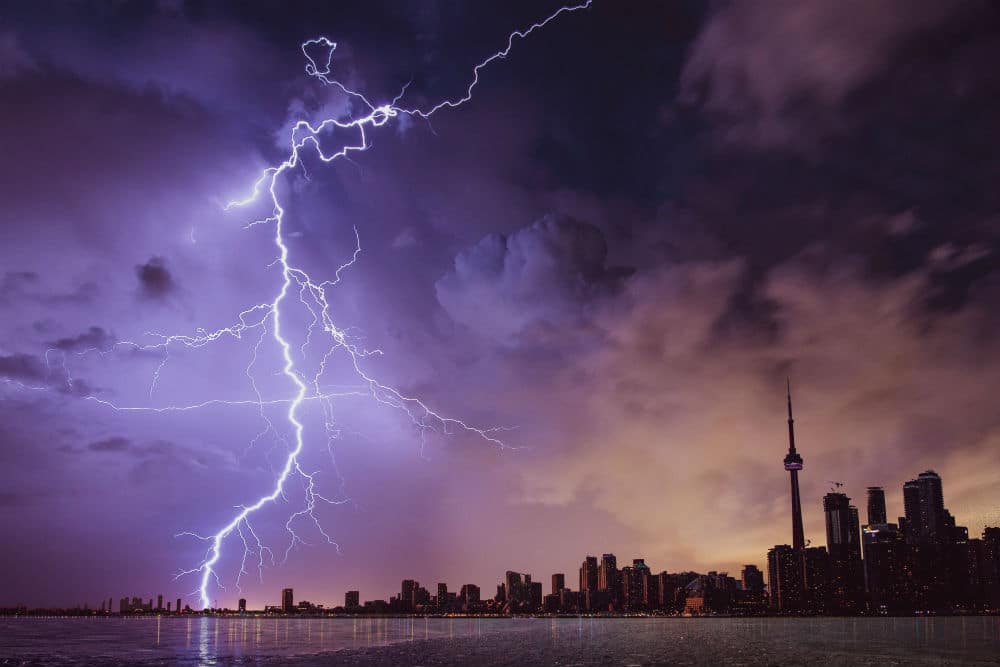With the Atlantic hurricane season currently underway and California’s wildfire season rapidly approaching, it would be fair to say that the majority of utility providers across North America are currently working hard to ensure they have successful storm response and management programs implemented.
With the number and severity of storms increasing each year, storm response is becoming even more critical for utility providers.
A study from Climate Central, titled Blackout: Extreme Weather, Climate Change and Power Outages, claims that climate change is causing an increase in extreme weather – which is among the leading causes of large-scale power outages in North America.
Are power outages increasing?
Research by the report found a tenfold increase in major power outages (those affecting more than 50,000 customer homes or businesses), between the mid-1980s and 2012. However, some of the increase was driven by improved reporting.
Yet even since 2003, after stricter reporting requirements were widely implemented, the report found that the average annual number of weather-related power outages doubled.
The study claims: “Climate change will increase the risk of more violent weather and more frequent damage to our electrical system, affecting hundreds of millions of people, and costing Americans and the economy tens of billions of dollars each year.”
Power outages caused by storms are simply unavoidable. Utility providers can either make the most of new technologies and create storm response and management strategies that help them to deliver a superior customer experience – or fall behind those who are pushing the industry forward.
Why is storm response so important for your customer?
When a storm results in a power outage for your customers, storm response and management strategy is essential. Customers won’t be happy simply sitting in their home waiting for the lights to turn back on, they want to see your utility proactively trying to solve the situation.
Whether your consumer is at home trying to do their work, making a meal for their family or simply watching TV, people are busy and do not want to sit around wasting time while their electricity comes back on.
We live in an immediate world where consumers can reach the information they need with the click of a button – and the utility sector is no different. Consumers want real-time updates on why there is a power outage, what your utility is doing to fix the issue and a rough estimate of when the power may be back up.
Storm outages do not only affect consumers at home either, but they also impact businesses that operate on your power grid. Storm outages for businesses could result in:
- Spoiled inventory.
- Delayed or missed business opportunities.
Take a restaurant owner, for example, an outage alert could prevent their entire cold goods supply from spoiling. Knowing the estimated duration of the outage – they can send out an employee to pick up some dry ice. Alternatively, what if the outage is only going to be a few minutes long and doesn’t really impact them?
The way you handle this outage, and the information you provide to this restaurant owner, could be the difference between them finding a solution and saving money, or having to dump all of their cold food and re-order it when the power comes back on.
How your utility can provide a better CX during a storm outage
By creating a storm response plan, your utility will ensure it’s prepared to manage storm outages – even if the number and duration of outages exceed your initial expectations.
The result? Press coverage that could have easily been negative is actually positive, your customer experience is seamless and customers are satisfied with your service, and your business was able to reduce costs and impacts to your business operations due to the efficient way you handled the storm.
Your storm response and management plan should involve a detailed grid map for better visibility into outages, a well-prepared operations and engineering team to fix issues when they happen, as well as increased communication with your customer.
One of the most important aspects of your storm response and management program should be setting up a storm notification and alert system that updates your customers with real-time messages.
Proactive communication will answer all of your customer questions with detailed and accurate outage information, and estimates of when their power will be back up and running.
Not only does this provide a superior experience for your customers through personalized updates that build customer trust in your company, it will reduce the number of calls to your customer service department as well as reduce the number of visits to your website. In turn, this could cripple your site if the appropriate hardware infrastructure is not in place to handle the high volume of visits.
Want to learn how SilverBlaze’s unique Customer Portal for Utilities can help your utility implement a successful storm response and management strategy? Contact our team of experts today. We would be more than happy to answer any questions that you have.
{{cta(‘0b3b6342-8a5e-4485-aa96-af0fb64bae78’)}}



